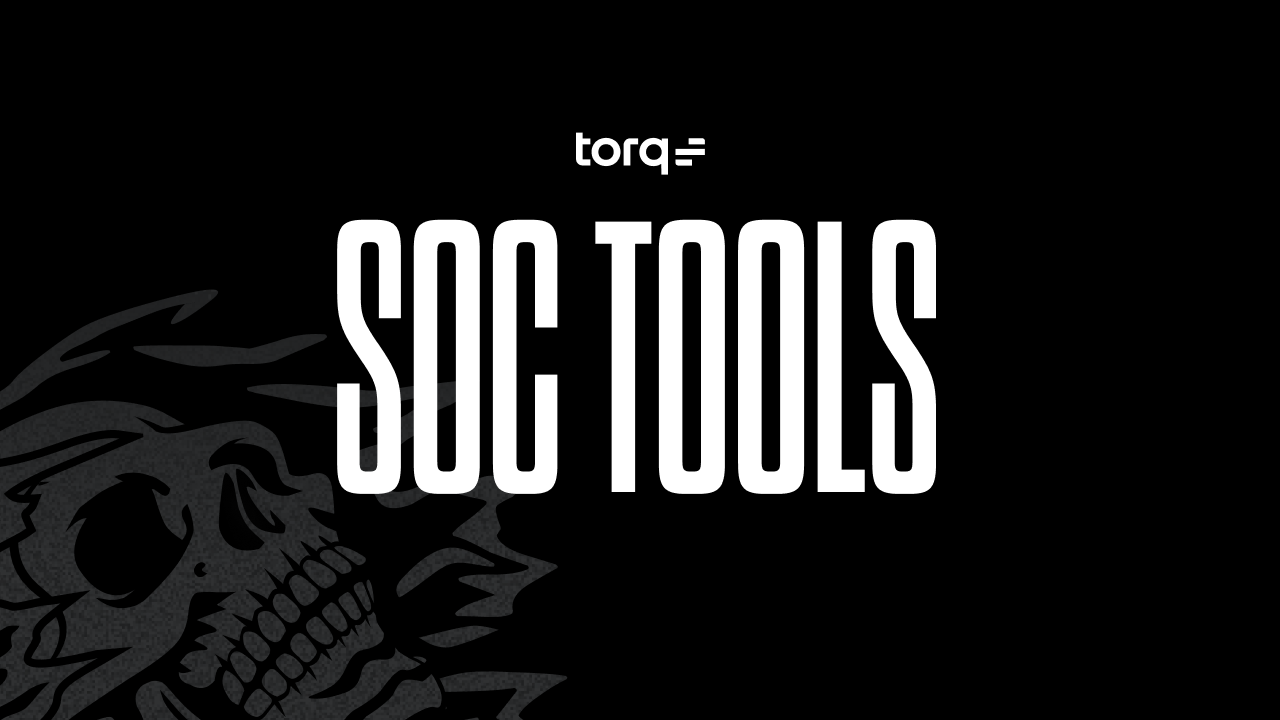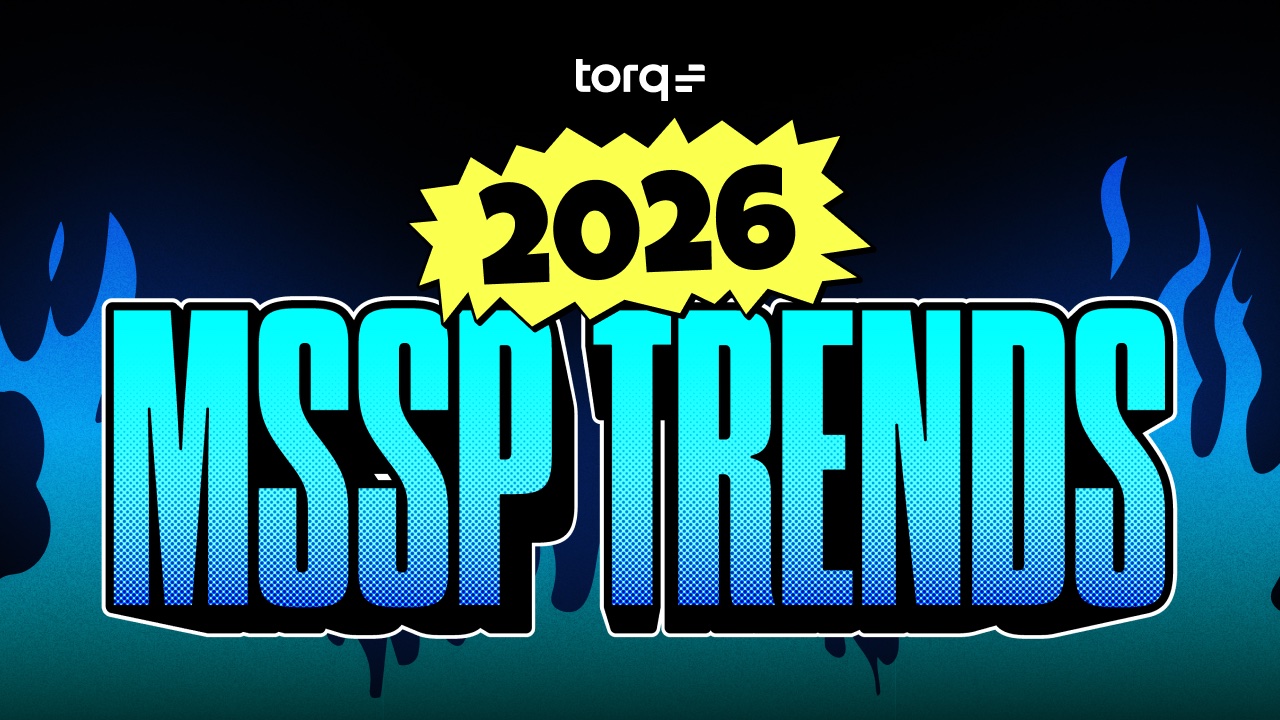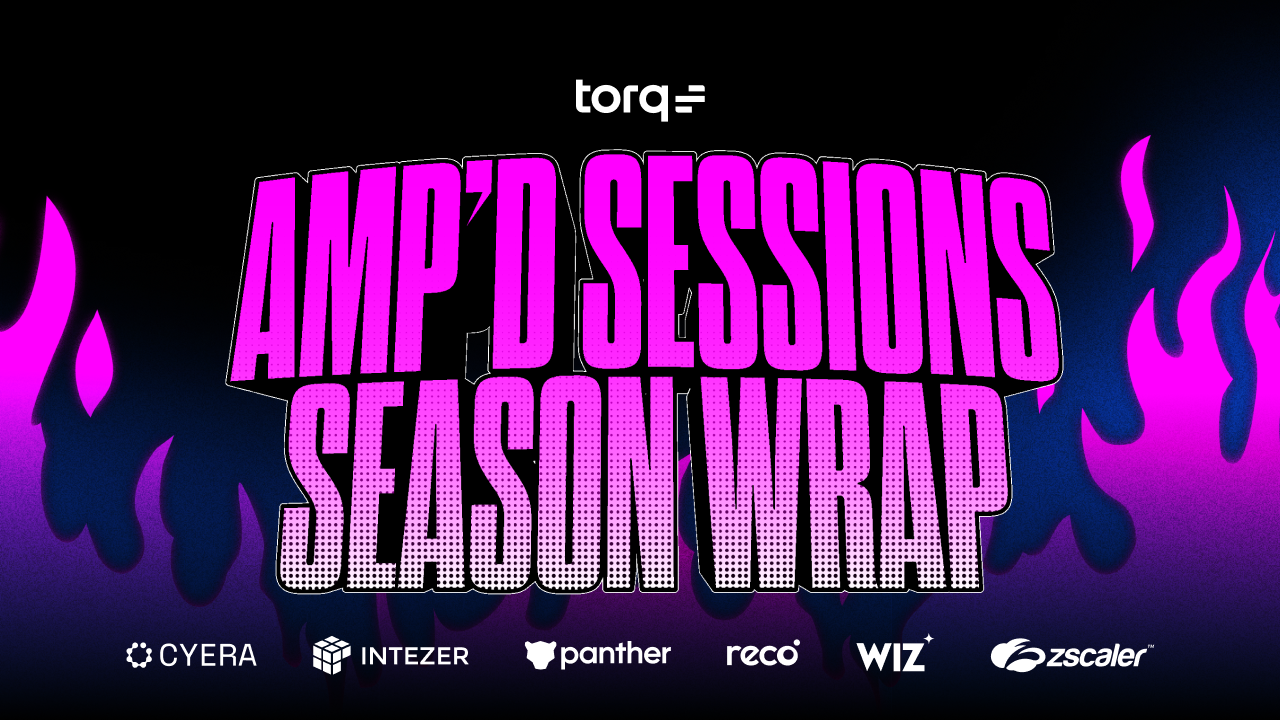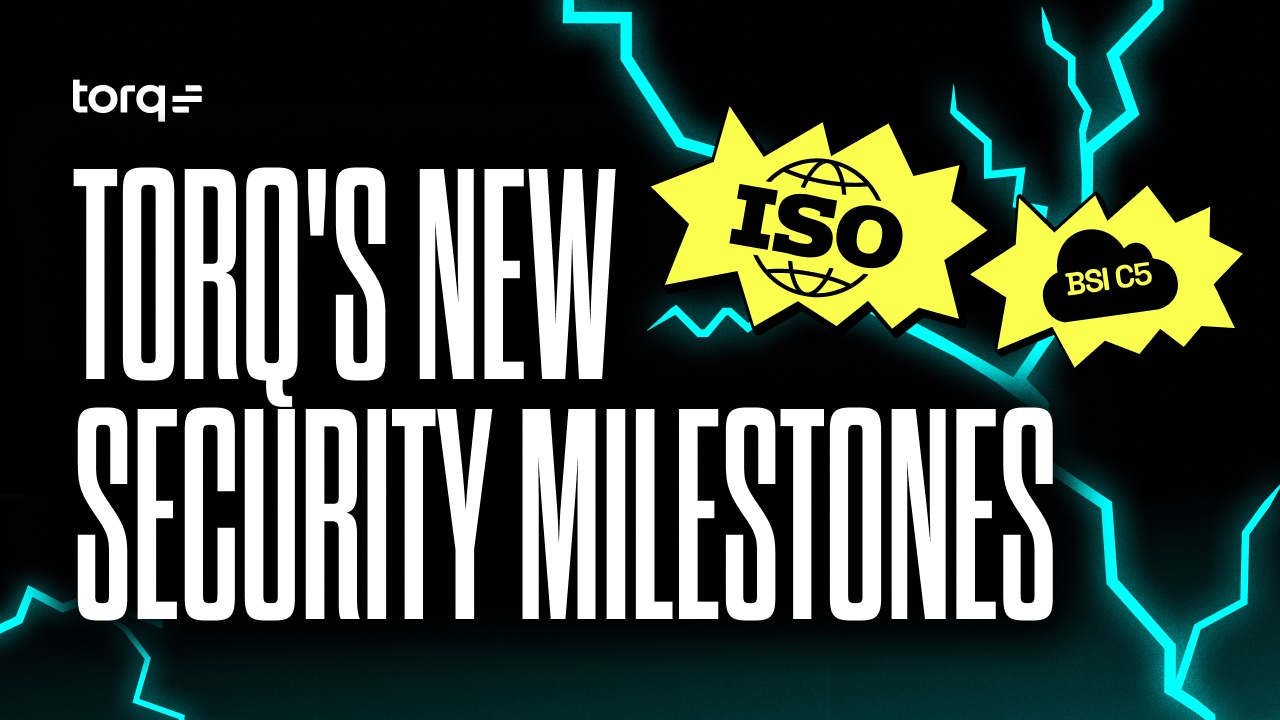Contents
Get a Personalized Demo
See how Torq harnesses AI in your SOC to detect, prioritize, and respond to threats faster.
Security Operations Centers (SOCs) are evolving faster than ever. As cybersecurity threats grow more sophisticated and digital infrastructure expands across cloud, hybrid, and on-prem environments, legacy SOC tools like SOAR are falling behind. Static dashboards, siloed point solutions, and human-dependent processes simply can’t keep up.
Traditional SecOps tools are no longer enough. Modern tools must proactively detect suspicious activities using broad data sources (e.g., threat intelligence, vulnerability databases, etc.) and enable seamless collaboration across teams. Automation is the key SOC tool to scale detection and response efficiently.
Modern SOCs require automation-first platforms that enable proactive defense, seamless integrations, and high-scale responsiveness. Platforms like Torq — powered by Hyperautomation — represent the next generation of SOC architecture.
Read on for a breakdown of SOC tools, an exploration of the best tools of 2025, and how automation streamlines security operations.
What is a SOC Tool?
SOC Tools
SOC tools are technologies designed to help security teams detect, investigate, and respond to threats. They support incident resolution by collecting and analyzing data across IT and cloud ecosystems. Each tool plays a vital role in the SOC technology stack.
Today’s cybersecurity environments rely on dozens of integrated systems. While powerful, this complexity can create inefficiencies, increase SOC analyst fatigue, and lead to slower threat response times. This is where SOC automation platforms like Torq shine by orchestrating across all tools, streamlining workflows, and accelerating response.
5 Core Capabilities of Security Operations Center Tools
Modern SOCs demand tools built for the cloud’s dynamic, distributed nature. Here are five must-have capabilities your stack needs.
1. Continuous SOC Monitoring
Tools should provide always-on visibility across cloud, hybrid, and on-prem workloads, dynamically adapting to autoscaling and ephemeral infrastructure. Look for platforms that detect real-time anomalies, monitor traffic flows, flag malicious configurations, and help strengthen your cloud security posture with minimal manual effort.
2. Log Collection and Analysis
Log tools enable deep investigation by aggregating decentralized telemetry across services. They help correlate signals across layers, enhancing intrusion detection, root cause analysis, and threat attribution across sprawling cloud environments.
3. Threat Detection
The best detection tools are plugged into real-time threat intel feeds and vulnerability databases. This allows SOC teams to quickly spot indicators of compromise (IoCs), detect novel tactics, and stay ahead of emerging threats with precision.
4. Incident Response
Incident response platforms have prebuilt playbooks and customizable workflows to stop attacks quickly. They can block malicious IPs, isolate compromised assets, and auto-contain threats without human intervention.
5. Automation
Security automation is essential for modern SOCs to operate efficiently at scale. It streamlines repetitive tasks, accelerates incident response, and allows SOC analysts to focus on complex threats instead of manual workflows.
The Top 10 SOC Tools in 2025
Specific tools have emerged as foundational to operational success as the SOC landscape evolves. Below are ten must-have SOC software tools and technologies for any security team aiming to stay ahead.
1. Log Collection and Management
Log management tools like Splunk and Elasticgather security logs and telemetry from various sources, including endpoints, network devices, and cloud environments. Proper log management is foundational for threat detection, compliance monitoring, and forensic investigations, making it an indispensable part of the SOC infrastructure.
2. Security Information and Event Management (SIEM)
SIEM platforms provide essential SOC monitoring and event correlation capabilities, helping security teams quickly identify and respond to threats. They are the cornerstone for centralized security operations.
Common examples of SIEM tools include IBM QRadar, Microsoft Sentinel, Splunk Enterprise Security, LogRhythm, and ArcSight. This SOC software correlates data across multiple sources, providing comprehensive threat visibility and efficient event management.
3. Vulnerability Management
Vulnerability management platforms continuously scan and assess SOC network assets for vulnerabilities, prioritizing them based on severity and business impact. These platforms help SOC analysts proactively address critical issues before attackers can exploit them.
Rapid7 InsightVM, Nessus, Tenable, and Qualys are leading vulnerability management tools that provide actionable vulnerability data, enabling teams to patch vulnerabilities rapidly and effectively. Effective vulnerability management reduces organizational risk, maintains compliance, and prevents attackers from exploiting known weaknesses.
4. Endpoint Detection and Response (EDR) and Extended Detection and Response (XDR)
EDR tools monitor endpoints, such as laptops and servers, enabling detection of malicious activities and automated response to threats in real time. Extended Detection and Response (XDR) solutions expand this coverage to networks, email, the cloud, and servers, delivering comprehensive security visibility.
EDR solutions like CrowdStrike Falcon and SentinelOne provide forensic capabilities and proactive threat-hunting features. XDR tools like Palo Alto Networks Cortex XDR unify endpoints, SOC networks, and cloud security to offer a holistic view of the threat landscape.
5. Email Security
Email security tools work by performing detection and response across email, endpoints, and identity systems. They can quarantine malicious messages, remove harmful emails post-delivery, and correlate activity across systems to reveal the full scope of an attack.
Solutions like Proofpoint and Microsoft Defender provide real-time URL and attachment sandboxing, threat intelligence integration, and automated remediation of compromised accounts. These capabilities not only strengthen threat response but also support compliance by enforcing encryption, archiving, and access controls.
6. Threat Hunting
Threat hunting tools proactively search for signs of malicious activity that evade traditional detection methods. Platforms like Carbon Black and Cisco empower SOC analysts with advanced investigative capabilities to discover and neutralize threats before they cause significant damage.
7. Threat Intelligence
Threat intelligence tools gather and analyze external threat data, providing actionable insights into potential cyber threats. Platforms such as Recorded Future and Anomali enhance a SOC’s ability to predict, identify, and ensure a proactive response to emerging threats, keeping teams informed of global threat trends and attacker tactics.
8. Cloud Security Posture Management (CSPM)
CSPM tools help identify, assess, and remediate misconfigurations and policy violations in cloud infrastructure. These tools continuously monitor cloud environments like AWS, Microsoft Azure, and Google Cloud Platform to ensure compliance with internal security policies and industry standards.
CSPM solutions automatically detect configuration drift, enforce least privilege access, and reduce the risk of data exposure by alerting teams to insecure storage, open ports, or excessive permissions. By offering centralized visibility and continuous compliance assessment, CSPM enables SOC teams to secure cloud workloads at scale while responding faster to evolving risks.
9. Identity and Access Management (IAM)
IAM tools control and monitor user access to IT resources, ensuring only authorized individuals can reach sensitive systems and data. They encompass technologies like single sign-on (SSO), multi-factor authentication (MFA), privileged access management (PAM), and identity governance.
In a SOC, IAM is essential for investigating incidents, detecting compromised accounts, and preventing unauthorized lateral movement, making it a cornerstone of a strong security posture.
10. Automation
At Torq, we call this Hyperautomation. Hyperautomation represents the next generation of SOC technology, combining advanced automation and artificial intelligence (AI) into a unified approach that fundamentally transforms traditional security operations.
Torq integrates seamlessly with existing SOC tools, orchestrating complex workflows across the entire security stack and significantly reducing repetitive, manual tasks. By leveraging GenAI and agentic AI, Torq Hyperautomation dynamically identifies, analyzes, and responds to threats in real time, delivering faster and more consistent incident responses.
This proactive, autonomous approach enables security teams to scale effectively, enhance operational efficiency, and improve accuracy across their security processes. Hyperautomation accelerates response times, reduces SOC analyst workload, and ensures more precise threat detection and remediation.
How Automation Transforms SOC Tools
Automation transforms traditional SOC operations by connecting disparate tools, streamlining workflows, and enabling rapid, automated responses. Here’s how:
- Faster detection and response: Automation drastically reduces the time it takes to identify, investigate, and respond to security incidents. What once took hours or days now happens in seconds, minimizing dwell time and damage.
- Increased SOC analyst efficiency: With Tier-1 alerts automatically triaged (and often auto-remediated) and routine tasks offloaded to automated workflows, SOC analysts can handle a higher volume of cases without burnout. Teams get more done with fewer resources, reducing the need to scale headcount just to keep up.
- Effortless scalability: As threats grow in number and complexity, automation allows SOC analysts to keep pace without compromising performance. Whether your environment is expanding across clouds or adding new tools, automation scales effortlessly alongside.
- Smarter use of human talent: SOC analysts are too valuable to be bogged down by repetitive tasks. Automation frees them to focus on high-impact investigations, strategic decision-making, and threat hunting, where human judgment and creativity matter most.
- Reduction in alerts: Automated triage filters out low-priority noise, enriching and escalating only the alerts requiring attention. SOC analysts stay focused on real threats instead of drowning in false positives.
How Torq Hyperautomation Transforms the SOC
Torq HyperSOC™ is the first agentic, AI-powered SOC platform built for autonomous security operations. It transforms your SOC from reactive and overloaded to autonomous and high-performing.
Here’s how Torq makes it happen.
Seamless Integration with Your Entire Security Stack
Torq connects instantly to all your SOC tools — SIEM, EDR, CSPM, IAM, SaaS platforms, ticketing systems, and even homegrown apps — without custom code or complex deployments. Whatever you’re running, Torq plugs in and gets to work.
AI Agents That Work Like SOC Analysts
At the heart of HyperSOC is Socrates, Torq’s AI SOC Analyst and omniagent. Socrates orchestrates a team of specialized AI Agents purpose-built for tasks like enrichment, case management, user verification, and remediation. Together, they coordinate end-to-end case lifecycles with precision and speed.
Natural Language-Driven Automation
Security automation doesn’t have to be complex. With Torq, anyone on your team can trigger powerful workflows using plain English. Want to isolate a user, rotate credentials, or escalate a threat? Just ask — Torq handles the rest.
Hyperautomation at Enterprise Scale
Torq’s performance automatically scales to keep up, whether your environment is cloud-native, hybrid, or on-prem. It runs thousands of workflows in parallel, adapts to evolving threats, and ensures no alert slips through the cracks.
Built to Flex with Your Needs
Torq’s open architecture and robust APIs let you fully customize cases to fit your cybersecurity strategy. Build once, reuse anywhere, and adapt fast to new use cases — all without needing a team of developers.
Hyperautomation is the SOC Tool You Need Today
As cybersecurity challenges mount, traditional tools are no longer enough. Modern security operations centers require intelligent, automated, and scalable solutions that enable security teams to move faster, act smarter, and deliver better outcomes.
AI-driven Hyperautomation is that solution.
Torq brings Hyperautomation to life, enabling SOC analysts to move beyond fragmented processes and manual triage. Whether you’re a lean security team or an enterprise SOC analyst, Torq empowers you to detect, respond, and remediate with unprecedented speed and precision.
Get the SOC tool you need.







